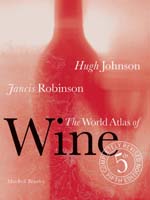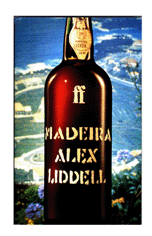|
Recent Articles |
|
|
Best Books ~ Celebrating World Book Day
Smells
aside, it’s pretty hard to put a wine writer, any wine writer, in the same
class as Cervantes or Shakespeare both of whom died on April 23rd. Nevertheless,
we have our icons, such as Alexis Lichine, Michael Broadbent, Tom Stevenson,
Hugh Johnson and Jancis Robinson, just to name a few. They
are all modern writers because, unlike the royalty of literature, those who toil
with wine prose quickly discover that their works are soon out of date. It’s
an occupational hazard. Nevertheless, one does occasionally need some
insights into the stuff being pouring into their glasses. So here are some
solutions. While
no one book will give you all the answers, if I had to select a single source,
it would be the second edition of The Oxford Companion to Wine ($89.95)
edited by Jancis Robinson and
published in 1999. The 819 pages weigh over 5 kilos. It brings a new sense of
meaning to the expression “if books
could kill.” Hernia
aside, this is by far the definitive reference manual for someone who is already
immersed or at least extremely interested in wine. Good eyesight and a bright
light are essential given the small print. For those wanting something more
compact, there’s a newer, abridged, less expensive, soft cover edition called
the Jancis Robinson’s Concise
Wine Companion available at only $24.95.
While
I might complain that not all the maps and/or copy are as comprehensive and
detailed as I personally might wish, it is nevertheless an indispensable
reference book for any oenophile. While interviewing Robinson at her Toronto
book launch last fall, I asked whether the increasingly wide use of new
standardized international winemaking techniques might infringe on the impact of
terroir (soil and microclimate), which is, after all, the foundation of the
Atlas. “There’s no question,”
Robinson replied, “it’s becoming
harder and harder to identify the characteristics that at one time were unique
to one region! Knowing where things come from, however, will always be an
important element in understanding the wine.”
MacNeil,
who was in Toronto this week, gives us the straight goods when she says that
it’s “often people who don't know a
lot about wine who pay enormous amounts for it, hoping that price will be some
sort of assurance." She also assures us to “take vintage charts with a big grain of salt.” While some
sections are a tad sparse (i.e. there are few maps to North American wine
regions) or even nonexistent (i.e. Brazil and Uruguay), it’s well worth the
price.
There’s
also the extensive Mitchell Beazley series of wine guides, which includes recent
2002 updates of Burton Anderson’s Wines of Italy (224 pages) and David
Peppercorn’s Wines of
Bordeaux. While very useful, I would be hard pressed to say that
either are glorious reads. They lean in an encyclopedic direction and are rather
terse and a tad abbreviated. With the exception of a few maps, they are almost
lifeless. It’s a needless shame. Just a glance at the similar sized, much more
attractive, easily readable 1984 Simon and Schuster edition of Burton’s work
will reveal how much the current edition has slipped. Both are priced at $21.95.
It
is an entertaining and educational read with lots of good anecdotal material by
the key players such as Inniskillin winemaker Karl Kaiser. This combined with
thumbnail sketches of producers around the world provides a fine overview of
what is now one of the most sought after wines. It’s worth noting that the Gourmand
World Cookbook Awards recently named Schreiner’s 344-page book the “Best
Book on the History of Wine in English”.
|
||
|
Copyright Food & Beverage Testing Institute of Canada
2004 |

 With
April 23rd just around the corner, I had hoped that my four-decade
wine tasting opus might be finished. Alas, it’s still far from complete. It
isn’t the million plus words I have published over the past three years,
it’s the scratch and sniff section of the book that still doesn’t work.
With
April 23rd just around the corner, I had hoped that my four-decade
wine tasting opus might be finished. Alas, it’s still far from complete. It
isn’t the million plus words I have published over the past three years,
it’s the scratch and sniff section of the book that still doesn’t work. Perhaps
the most important wine book to appear last year was the newly revised edition
of
Perhaps
the most important wine book to appear last year was the newly revised edition
of  Last
year also saw the release of a very reasonably priced, albeit somewhat less
comprehensive 910-page paperback called
Last
year also saw the release of a very reasonably priced, albeit somewhat less
comprehensive 910-page paperback called  Of
course, dozens of other fine volumes remain. The Faber series on wine, for
instance, includes some 19 definitive works by different authors. If you want to
know everything there is to know about Madeira, for instance, then Alex
Liddell’s
Of
course, dozens of other fine volumes remain. The Faber series on wine, for
instance, includes some 19 definitive works by different authors. If you want to
know everything there is to know about Madeira, for instance, then Alex
Liddell’s  Closer
to home, British Columbia based John Schreiner has written a number of worthy
books usually dealing with the wines of his home province. His most recent
effort from last year tackles Canada’s claim to fame
Closer
to home, British Columbia based John Schreiner has written a number of worthy
books usually dealing with the wines of his home province. His most recent
effort from last year tackles Canada’s claim to fame